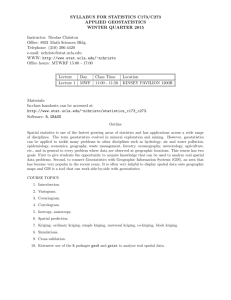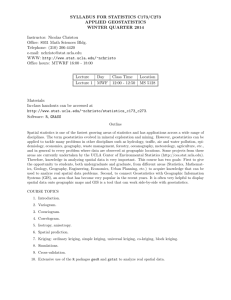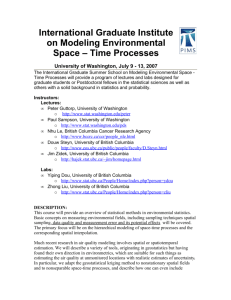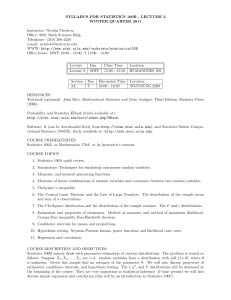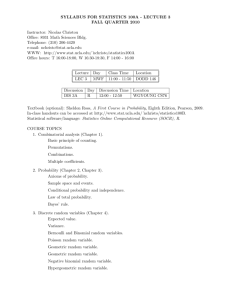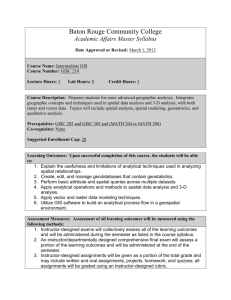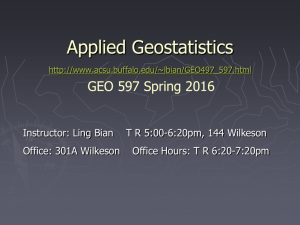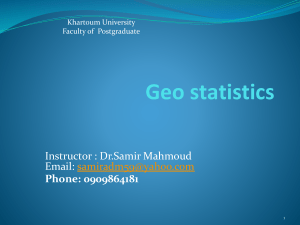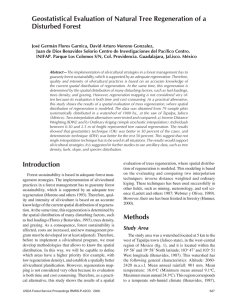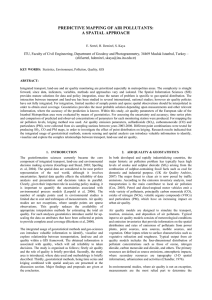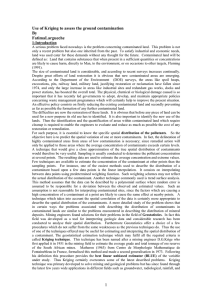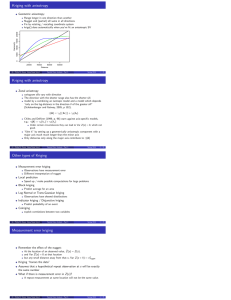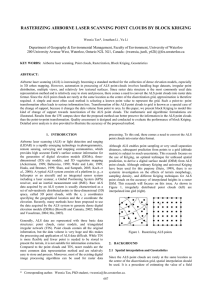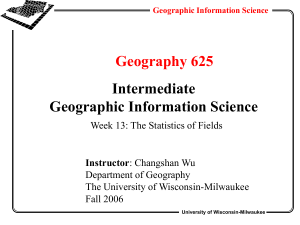SYLLABUS FOR STATISTICS C173/C273
advertisement
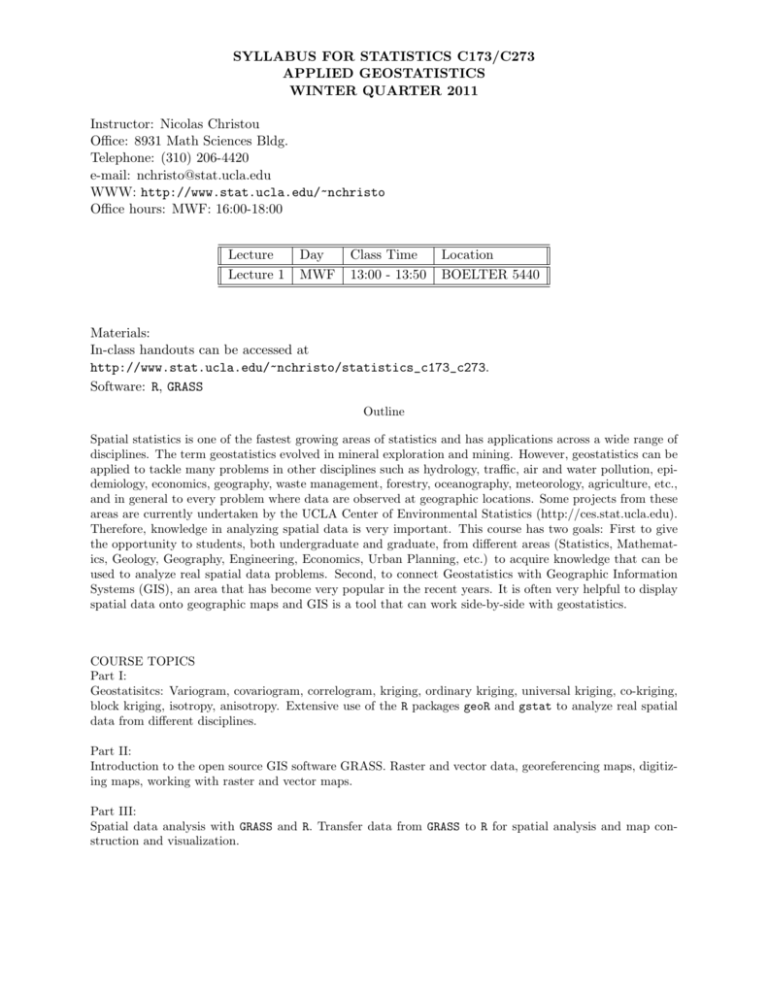
SYLLABUS FOR STATISTICS C173/C273 APPLIED GEOSTATISTICS WINTER QUARTER 2011 Instructor: Nicolas Christou Office: 8931 Math Sciences Bldg. Telephone: (310) 206-4420 e-mail: nchristo@stat.ucla.edu WWW: http://www.stat.ucla.edu/~nchristo Office hours: MWF: 16:00-18:00 Lecture Lecture 1 Day MWF Class Time 13:00 - 13:50 Location BOELTER 5440 Materials: In-class handouts can be accessed at http://www.stat.ucla.edu/~nchristo/statistics_c173_c273. Software: R, GRASS Outline Spatial statistics is one of the fastest growing areas of statistics and has applications across a wide range of disciplines. The term geostatistics evolved in mineral exploration and mining. However, geostatistics can be applied to tackle many problems in other disciplines such as hydrology, traffic, air and water pollution, epidemiology, economics, geography, waste management, forestry, oceanography, meteorology, agriculture, etc., and in general to every problem where data are observed at geographic locations. Some projects from these areas are currently undertaken by the UCLA Center of Environmental Statistics (http://ces.stat.ucla.edu). Therefore, knowledge in analyzing spatial data is very important. This course has two goals: First to give the opportunity to students, both undergraduate and graduate, from different areas (Statistics, Mathematics, Geology, Geography, Engineering, Economics, Urban Planning, etc.) to acquire knowledge that can be used to analyze real spatial data problems. Second, to connect Geostatistics with Geographic Information Systems (GIS), an area that has become very popular in the recent years. It is often very helpful to display spatial data onto geographic maps and GIS is a tool that can work side-by-side with geostatistics. COURSE TOPICS Part I: Geostatisitcs: Variogram, covariogram, correlogram, kriging, ordinary kriging, universal kriging, co-kriging, block kriging, isotropy, anisotropy. Extensive use of the R packages geoR and gstat to analyze real spatial data from different disciplines. Part II: Introduction to the open source GIS software GRASS. Raster and vector data, georeferencing maps, digitizing maps, working with raster and vector maps. Part III: Spatial data analysis with GRASS and R. Transfer data from GRASS to R for spatial analysis and map construction and visualization. COURSE GRADES: There will be a final project on a data set of your choice, and homework or labs that will be assigned every week. Please staple your homework or labs and write your name on them. Late homework or labs will not be accepted. Being in class on time and fully participating is important for your understanding of the material and therefore for your success in the course. You are required to attend all the lectures. Attendance will be taken during the course and it will count for 20% of your grade. Final Project: Each student will select a spatial data set from an area of interest to analyze using the techniques learned in class. There will be an in-class presentation of the final project at the end of the quarter. The course grade will be based on the calculation F inal score = 0.20 × Attendance + 0.50 × Homework/Labs + 0.30 × P roject Important dates: First day of classes: 03 January 2010. Last day of classes: 11 March. Holidays: 17 January (Martin Luther King, Jr.), 21 February (Presidents’ Day). Good Luck !!!
